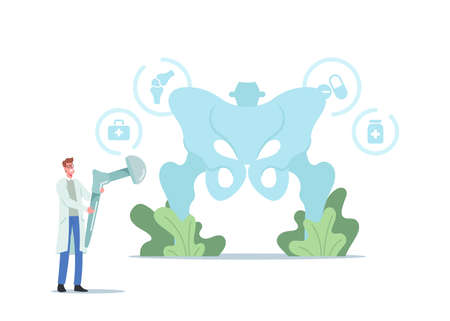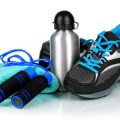1. Understanding the Multidimensional Nature of Pain
Pain is more than just a physical sensation—its a complex experience that touches every part of our lives. In the United States, physical therapists are increasingly using integrative approaches to pain management by looking beyond the injury or diagnosis and considering the whole person. This shift is largely guided by the biopsychosocial model, which helps us understand how pain is influenced not only by whats happening in your body, but also by your thoughts, feelings, and social environment.
The Biopsychosocial Model Explained
The biopsychosocial model suggests that pain is shaped by three main factors: biological (physical), psychological (emotional), and social. Instead of treating pain as just a symptom to be fixed, this approach asks therapists and patients to explore what’s really going on from multiple angles. Here’s a simple breakdown:
| Factor | Examples | Impact on Pain |
|---|---|---|
| Biological | Injury, inflammation, nerve damage | Physical sensations, mobility limits |
| Psychological | Stress, anxiety, depression, fear of movement | Can amplify pain or make it harder to manage |
| Social | Support from family/friends, work environment, cultural beliefs about pain | Affects coping skills and recovery speed |
Why This Matters in U.S. Physical Therapy Practice
Integrative pain management in America often means working with a team—physical therapists, doctors, counselors, and sometimes even family members—to address all these aspects. For example, someone with chronic back pain might need hands-on therapy for their muscles (biological), strategies to deal with stress (psychological), and support from loved ones or community groups (social).
Key Takeaways for Patients and Providers
- Pain isn’t just “in your head” or “in your body”—it’s both, plus your environment.
- Understanding these different influences can help create better therapy plans tailored to each person’s unique situation.
- This approach encourages open communication between patients and therapists so treatment goals fit real-life needs.
2. Conventional Physical Therapy Techniques
Overview of Traditional Modalities in American Clinics
In the United States, physical therapists use a variety of well-established methods to help manage pain. These conventional techniques form the foundation of many treatment plans and are supported by years of clinical experience and research. Here’s a look at some of the most common approaches:
Manual Therapy
Manual therapy involves hands-on techniques used by therapists to mobilize joints, soft tissues, and muscles. This can include joint mobilizations, massage, stretching, and trigger point release. The main goal is to reduce pain, improve mobility, and enhance function. Studies show that manual therapy can be especially effective for conditions like low back pain, neck pain, and joint stiffness.
Therapeutic Exercise
Exercise is a core component of physical therapy in America. Therapists design personalized exercise programs to strengthen weak muscles, improve flexibility, and support overall movement patterns. Therapeutic exercises can range from simple stretches to more advanced strengthening routines. Research consistently supports exercise as a key tool for reducing pain and improving quality of life for people with chronic conditions such as arthritis or after surgery.
Modalities: Ultrasound and TENS
| Modality | How It Works | Common Uses | Evidence |
|---|---|---|---|
| Ultrasound | Uses sound waves to generate heat deep in tissues, promoting blood flow and healing. | Tendonitis, muscle strains, joint inflammation. | Mixed evidence; some benefit for short-term pain relief. |
| TENS (Transcutaneous Electrical Nerve Stimulation) | Sends mild electrical impulses through the skin to interfere with pain signals. | Chronic pain, nerve pain, post-surgical pain. | Good evidence for temporary pain reduction; commonly used for home management. |
The Role of Conventional Techniques in Pain Management
These traditional methods are often combined based on each patient’s unique needs. For example, someone recovering from knee surgery might receive manual therapy to reduce swelling, therapeutic exercises to rebuild strength, and TENS for additional pain control. The combination of these treatments helps address pain from multiple angles—physical, neurological, and functional—making them an essential part of integrative pain management in American physical therapy clinics.

3. Incorporating Mind-Body Interventions
What Are Mind-Body Interventions?
Mind-body interventions focus on the connection between the mind and body to help manage pain and improve function. These approaches are becoming more popular in U.S. physical therapy clinics, outpatient centers, and wellness studios because they empower patients to take an active role in their recovery. By addressing both physical and emotional aspects of pain, these methods often complement traditional therapies.
Popular Mind-Body Techniques in Pain Management
| Technique | Description | Common Benefits |
|---|---|---|
| Mindfulness Meditation | A practice of focusing awareness on the present moment while calmly acknowledging thoughts and feelings. | Reduces stress, lowers pain perception, improves emotional well-being. |
| Relaxation Techniques | Methods such as deep breathing, progressive muscle relaxation, and guided imagery. | Lowers muscle tension, decreases anxiety, helps with sleep quality. |
| Yoga | A combination of gentle movements, stretching, breathing exercises, and meditation. | Increases flexibility, strength, balance; reduces chronic pain symptoms. |
| Tai Chi | A slow-motion exercise that combines movement with breath control and focus. | Improves balance, coordination, joint mobility; relieves pain. |
| Biofeedback | Uses sensors to help patients gain awareness of bodily processes (like heart rate or muscle tension). | Teaches control over physiological responses to pain or stress. |
How Are These Methods Used in Physical Therapy?
Physical therapists often combine these mind-body techniques with traditional rehab exercises. For example, a patient recovering from back pain may learn deep breathing or mindfulness skills alongside core strengthening routines. In some clinics across the United States, group classes for yoga or tai chi are offered specifically for people managing chronic pain conditions. Therapists might also recommend smartphone apps for guided meditation or relaxation exercises that patients can use at home between appointments.
Cultural Acceptance in the U.S.
The integration of mind-body interventions has grown due to increased interest in holistic health across America. Many insurance plans now cover these services when provided by licensed practitioners. Patients appreciate having more options to address their unique needs—especially those who prefer non-drug solutions or want to complement their medical care with self-care practices. As public awareness grows, so does the demand for physical therapists trained in these integrative approaches.
4. Collaborative Care and Patient Empowerment
Teamwork in Pain Management
In the United States, a patient-centered approach is at the heart of effective pain management in physical therapy. This means that care isnt just about what happens in one clinic or with one provider—its about bringing together a whole team to help each person feel their best. Physical therapists work closely with doctors, nurses, occupational therapists, psychologists, and sometimes even social workers to create a plan that fits each patients unique needs. This kind of multidisciplinary collaboration makes sure all aspects of pain—physical, emotional, and social—are addressed.
The Role of Patient Education
Education is a powerful tool in helping people manage pain. Physical therapists spend time teaching patients about their condition, what causes their pain, and how certain activities or habits can help or hurt. When patients understand whats going on in their bodies, theyre more likely to take an active role in their recovery. This educational approach reflects American healthcare values: informed patients make better choices for themselves.
Key Elements of Patient Education in Physical Therapy
| Topic | Examples |
|---|---|
| Pain Science | Understanding how pain works in the body |
| Posture and Movement Training | Learning safe ways to move at work or home |
| Home Exercise Programs | Instructions for stretches and strengthening exercises |
| Lifestyle Modifications | Advice on sleep, nutrition, stress management |
Empowering Self-Management Strategies
Empowerment means giving patients the tools and confidence they need to manage pain on their own. In the American healthcare system, self-management strategies are highly valued because they encourage independence and long-term wellness. Physical therapists often teach skills such as relaxation techniques, pacing activities to avoid flare-ups, and keeping track of progress with pain diaries or apps.
Common Self-Management Tools Used in Physical Therapy
| Tool/Strategy | Description/Benefit |
|---|---|
| Pain Journals or Apps | Track symptoms and triggers over time to spot patterns |
| Breathing & Relaxation Exercises | Reduce muscle tension and stress-related pain responses |
| Goal Setting | Create realistic milestones for activity and recovery progress |
| Patient Support Groups | Connect with others facing similar challenges for encouragement and ideas |
The Value of Collaboration and Empowerment in American Healthcare Culture
This collaborative model—where providers work together and patients play an active part—is a hallmark of American healthcare. It respects each persons voice and choices while using the strengths of different professionals. Ultimately, this approach helps people feel supported, knowledgeable, and confident as they manage their pain and improve their quality of life.
5. Leveraging Technology and Community Resources
Integrative pain management in physical therapy is evolving rapidly, thanks to new technologies and stronger community connections. These tools are helping more Americans—no matter where they live or what background they come from—get the care they need. Let’s look at how telehealth, mobile apps, and local programs are making a difference.
Telehealth: Bringing Care to Your Home
Telehealth has changed the game for people who can’t always make it to a clinic. Through video calls or phone check-ins, patients can connect with their physical therapists from home. This is especially helpful for those living in rural areas, older adults with limited mobility, or busy families who need flexible options.
How Telehealth Supports Integrative Pain Management
| Benefit | Description |
|---|---|
| Accessibility | Reaches patients in remote or underserved communities |
| Convenience | Allows appointments without travel or time off work |
| Continuity of Care | Makes it easier to follow up and adjust treatment plans regularly |
| Personalized Education | Offers one-on-one guidance about self-management strategies at home |
Apps: Support at Your Fingertips
A variety of smartphone apps now help people manage pain alongside their therapy. Some track symptoms, remind users about exercises, or teach relaxation techniques like mindfulness. Many are available in multiple languages, helping bridge cultural gaps and provide support to diverse American communities.
Examples of Useful Apps for Pain Management
- Pain tracking journals: Record daily pain levels and triggers to share with your therapist.
- Exercise reminders: Help you stick to prescribed physical therapy routines.
- Meditation guides: Teach techniques to manage stress and pain perception.
- Educational resources: Explain integrative therapies in simple language.
Community-Based Programs: Building Local Support Networks
No one should feel alone when dealing with chronic pain. Community centers, local gyms, and faith-based organizations across the U.S. offer group exercise classes, wellness workshops, and support groups. These programs often partner with physical therapists and healthcare providers to bring holistic care closer to home.
Popular Community Resources in the U.S.
| Resource Type | What It Offers | Who Benefits Most? |
|---|---|---|
| Local YMCAs/Community Centers | Group fitness classes (yoga, Pilates), educational seminars on pain management | Seniors, families, low-income individuals |
| Pain Support Groups | Peer support, sharing experiences, emotional encouragement | People living with chronic pain conditions |
| Cultural Organizations | Bilingual education sessions about integrative health approaches | Diverse ethnic communities across America |
| Libraries & Health Fairs | Free workshops and information on managing pain holistically | The general public; those seeking affordable resources |
The Power of Combining Technology and Community Resources
The most effective pain management plans often blend high-tech solutions with real-life community support. By using both, physical therapists can reach more people, respect cultural differences, and empower every American to play an active role in their own healing journey.


